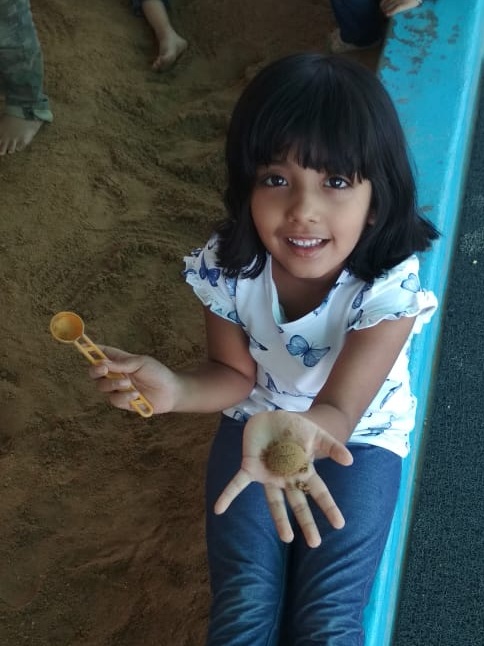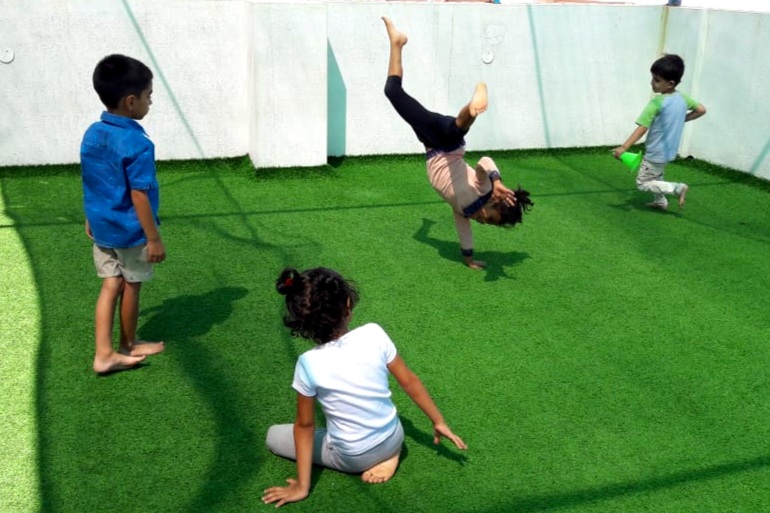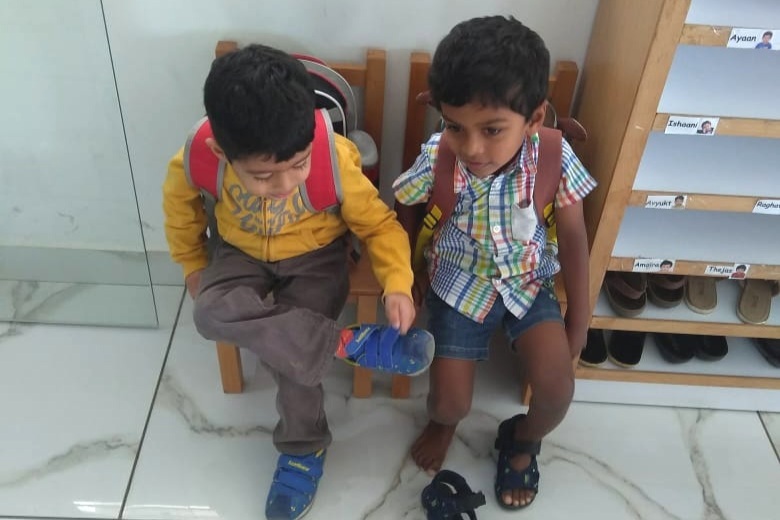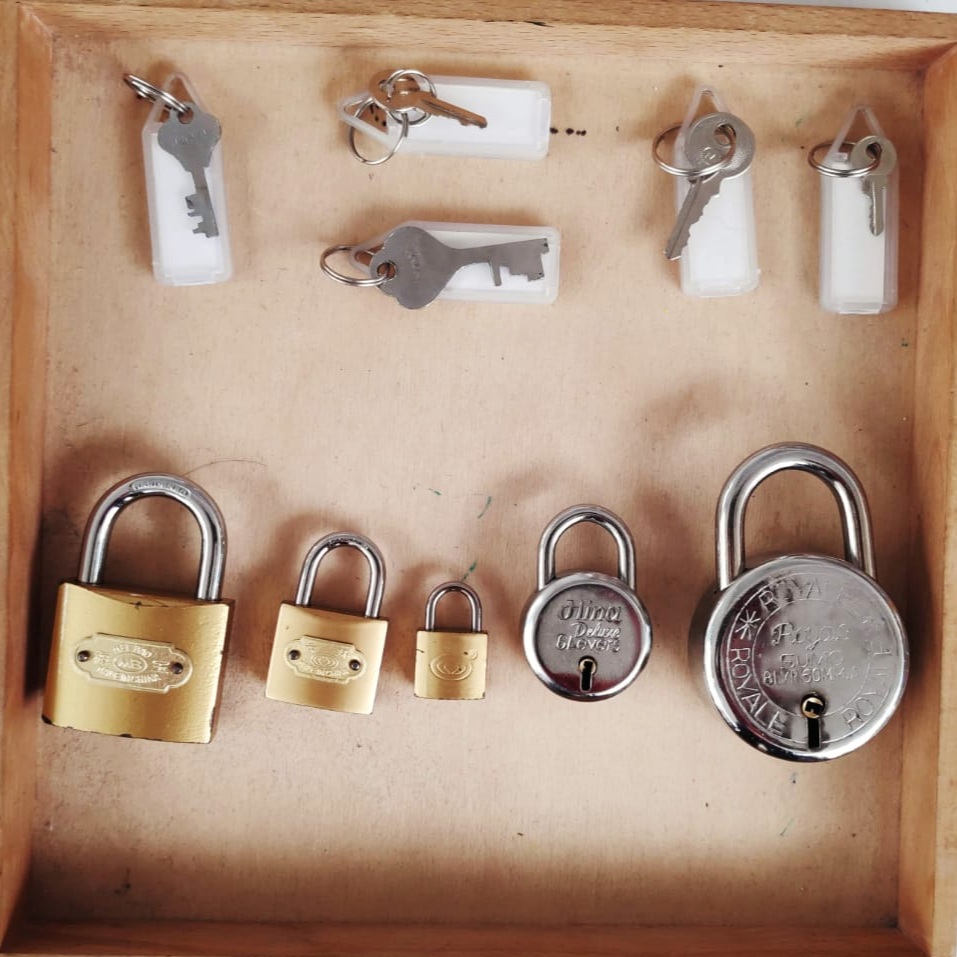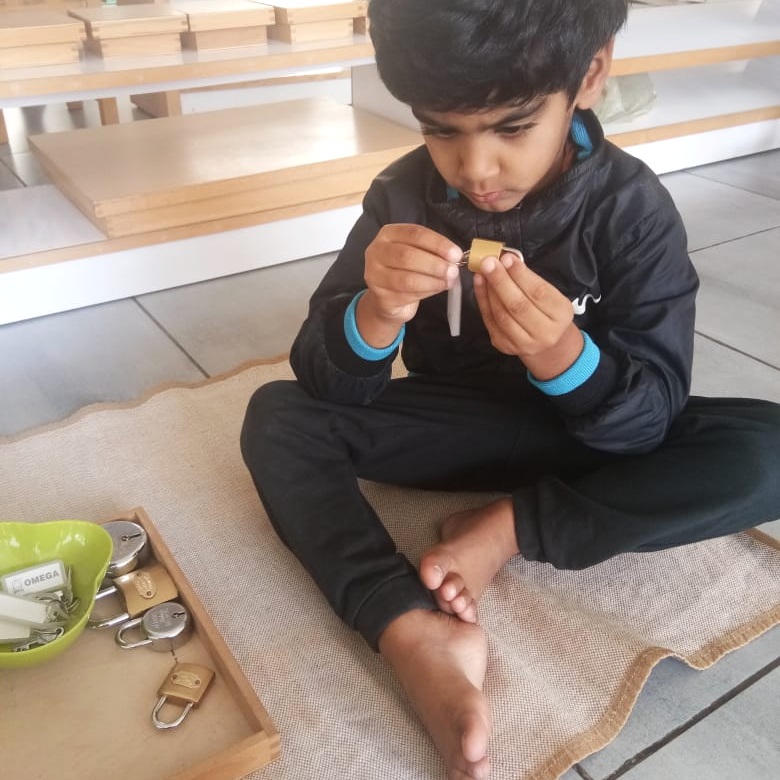In the Montessori curriculum, we use stories to introduce ideas, teach new concepts, and to reinforce or extend lessons.
The change in our brains when we listen to a story versus a lecture composed of facts and figures is dramatic. When listening to a story versus a list of facts, a child uses additional parts of her brain and is able to connect emotionally with the characters. The child also builds a stronger emotional bond with the storyteller.
On top of that, listeners of a story deepen their capacity for empathy and grow their attention span. Every one of these results in what Montessori education hopes to instil in children.
As a parent, you have a natural advantage over the school: you know your child in a way an educator can never do. From the very beginning of life, your child has learned many things from you simply by imitation. In the same vein, you can help prepare her for reading in the same way.
Simply put, your child will want to read and write if she sees that you enjoy reading and writing. It won’t matter what it is that you like reading: newspapers, magazines, light fiction, poetry or serious non-fiction; it only matters that she sees you having a good time while reading it! The other most important factor in helping your child on the journey towards reading is to read to her whenever you can.
Here are some tips on promoting the reading habit at home:
It is very important that your child can access books independently. When your child is very young, have a small shelf at her own height so that she is able to choose books for herself when she wants to read. If you don’t have room for a shelf, prop some books on the floor up against the wall, making sure the front cover of each book is visible -- remember that it is impossible for children to choose books when they can only see the spine!
Let the number of books available for the child to directly access at any time be limited (this applies to toys too!). Keep changing the selection of books accessible from time to time.
Read aloud as often as you possibly can to your child, and at-least once a day. It is possible that reading together is the only shared activity in a day for busy, working parents and it can help create a special bond between you and your child. Physical contact is often vital and it is important that both of you must be able to look at the book at the same time.
Ensure that you have shown your child how to handle books -- we often forget that this is a skill in itself. Show your child how to gently turn the pages of a book, how to carry a book, and how to put a book back on the shelf after reading.
Because children enjoy the same book over and over again, it is very likely that they are going to ask you to repeat them for many consecutive days! Choice (of the book) & repetition are critical needs for children less than six, and It is important to follow these needs (even if it may be boring for you!)
You will end up reading certain books many times -- however, do not be tempted to paraphrase a book just because you are anxious to get to the end! Remember that children very quickly remember the story, and it will be disconcerting to them.
To clarify expectations, be clear before you begin how much you are going to read (as a daily practice). With small children, the appropriate stories tend to be quite short and you can decide together whether you read one or two. Once you are reading books with chapters, you will have to agree on the number of chapters you will read per night.
Over time, as you settle into the daily reading practice, look at the printed words on the page and ask your child open-ended questions about what she thinks might happen next, and what she believes the characters might be thinking. This will encourage her to give active attention to the story, and active participation of this kind has been shown to have a good effect on reading ability in young children.
Remember that all such reading must happen on physical books! (Not tablets, phones or any other reading devices). Children gain a lot from the physical sensations a book offers: the size of the book, the smell, the type and texture of paper, the richness of the illustrations and so on. It is clear that some books make a deeper impression on children than others, and in part, this can be due to the fact that more senses have been aroused by these books than just the ear and the eye.
When your child begins to go off by herself and chooses a book, handles it gently, gets comfortable and starts to look through it in a world of her own, you will know that you have succeeded! Building the inner motivation to read books is the first step; the actual act of reading the printed word will easily follow.
[Adapted from Lynne Lawrence, “Montessori Read & Write: A Parents’ Guide to Literacy”]




